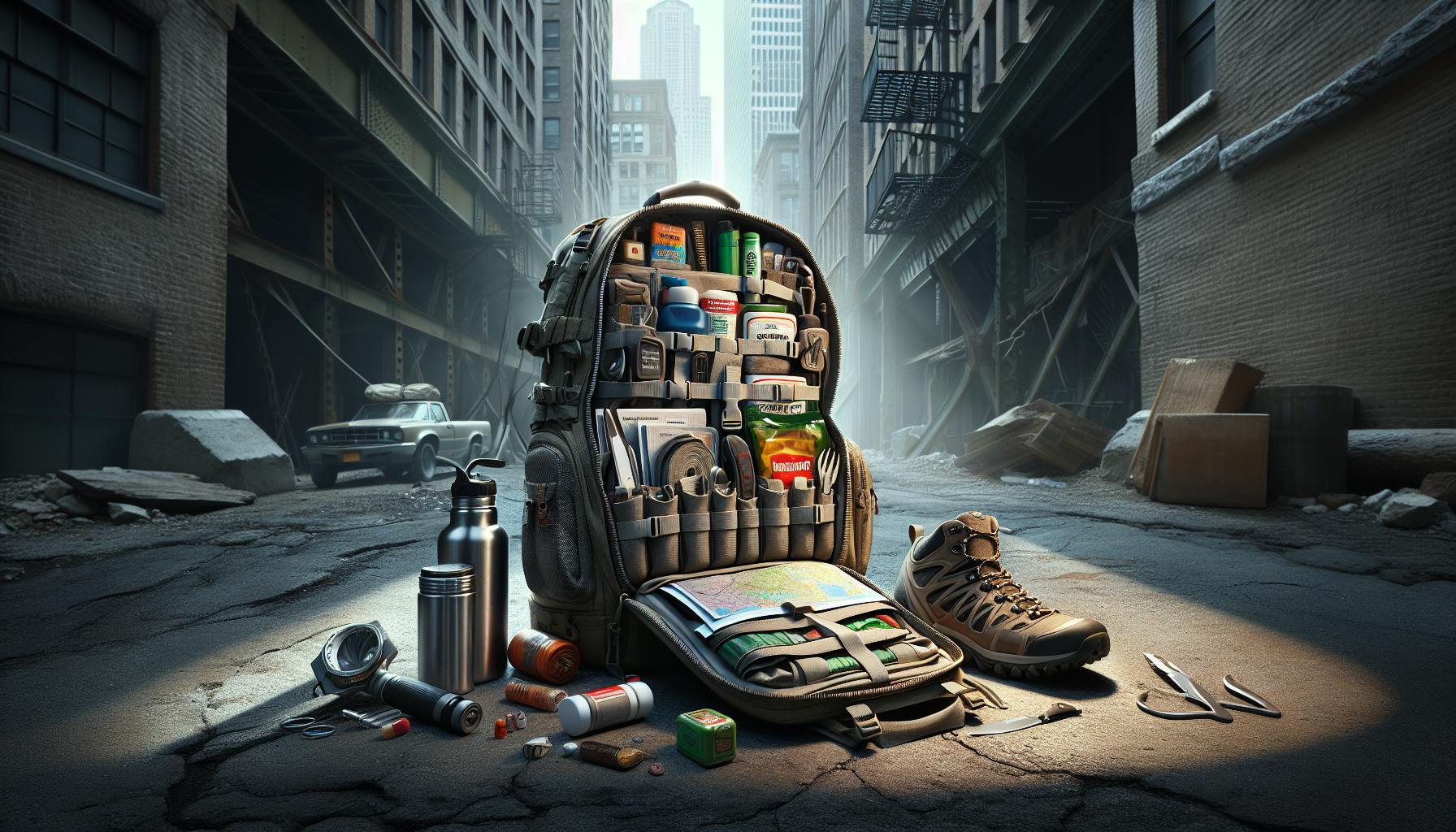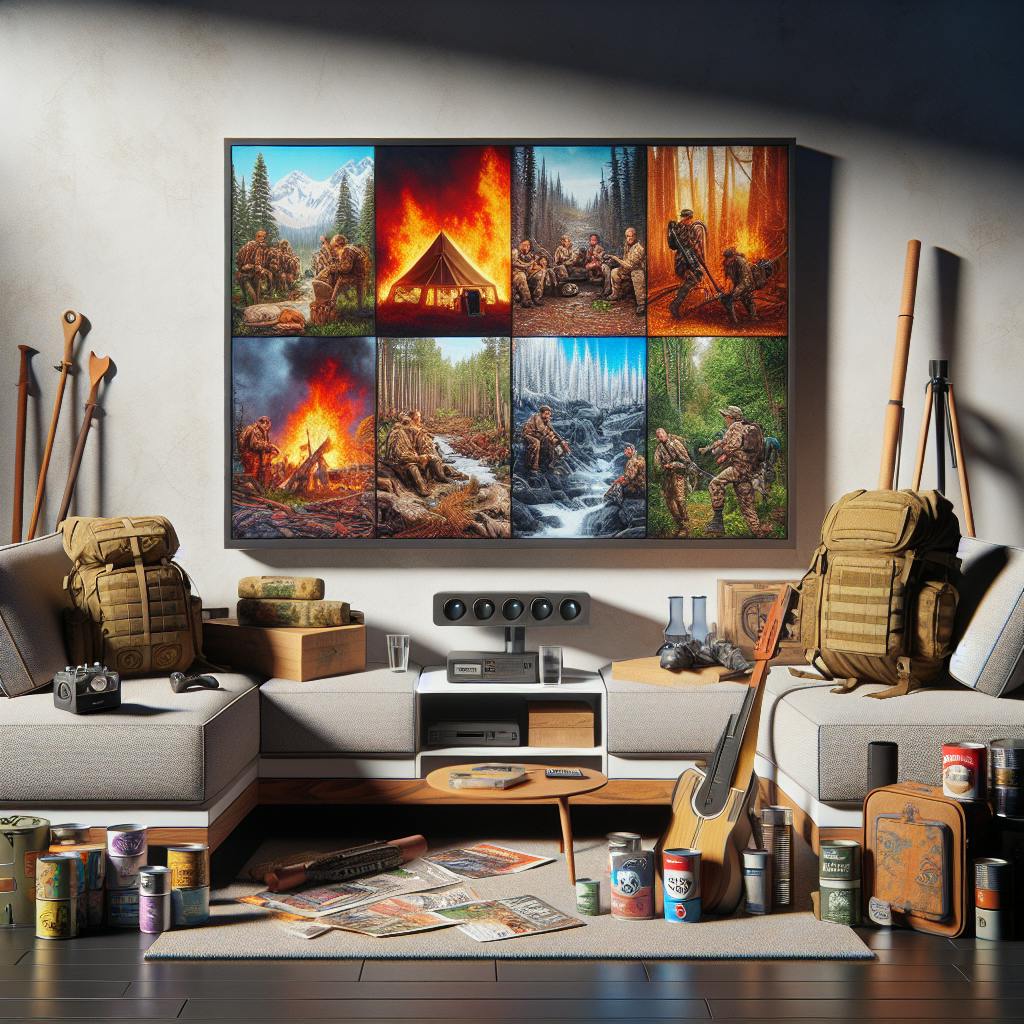As a prepper, having a well-stocked pantry is essential for emergency preparedness. When disaster strikes, you do not want to be caught off guard without adequate food and supplies to sustain your family. Creating a comprehensive pantry prepper list ensures you have all the survival staples you need. Here are some best practices for prioritizing your stockpile, especially when prepping for common regional disasters like earthquakes, wildfires, blizzards, or floods.
Introduction to Creating a Pantry Prepper List
When building your pantry, focus first on shelf-stable foods and supplies that can last at least 2-4 weeks without refrigeration or freezing. This provides a buffer in case utilities are disrupted. Start with basics like rice, beans, canned vegetables, fruits, meats, bottled water and first aid items.
Gradually build up your reserves as budget allows. Take inventory before shopping trips to avoid doubling up on items. Rotate stock using a "first in, first out" system to keep supplies fresh. Group foods by category and use clear storage bins from brands like Sterilite or Iris for easy access.
Make sure to factor in dietary restrictions, pet food, prescription meds and equipment for infants or elderly family members. Your pantry should meet your unique needs.
Assessing Your Family's Unique Needs
Do a thorough assessment before prepping your pantry. Make a list of each family member along with ages, medical conditions, food intolerances and prescription requirements. This ensures you have the right foods and medications on hand for everyone's health, dietary and cultural needs.
Don't forget about pets! Include enough pet food and supplies like collapsible bowls, medications and litter for cats/small animals. Having toys and comfort items can also reduce pet stress during an emergency.
For infants, stock extra formula, diapers and wipes. For elderly family members, have mobility aids, incontinence supplies and easy-to-chew foods. Prep accordingly for all.
Storing Water Effectively
Water is essential for drinking, cooking, hygiene and sanitation. Experts recommend storing at least 1 gallon per person per day, ideally in food-grade plastic jugs. Add 8 drops bleach per gallon and replace every 6-12 months.
Keep water jugs in a cool, dark place to prevent algae growth. Wrap in blankets or reflective insulation like Reflectix to moderate temperature fluctuations. Always use clean containers designated only for water storage. Proper conditions increase shelf life.
Stocking Up on Shelf-Stable Foods
Focus your pantry on nutrient-dense basics with long shelf lives. Think canned vegetables like carrots, spinach, mixed veggies, beans, lentils, oats, quinoa, nuts, dried fruits, broths and canned meats like tuna, salmon, or chicken. Comfort foods like pasta, rice and jarred sauces provide familiarity during stressful times.
Look for items already in your regular diet that store well. This simplifies cooking with pantry foods. Supplement with camping meals or MREs as an emergency backup.
Gathering Essential Food Preparation Items
Ensure you have the supplies needed to safely prepare shelf-stable foods. A manual can opener, propane or charcoal for cooking, and pots, pans, utensils are must-haves.
Cast iron cookware allows cooking over an open fire if needed. Paper plates and cups conserve water for drinking and hygiene. Having fuel, ways to cook food, and basic prep gear reduces reliance on utilities.
Securing Medical Supplies
Medical issues don't stop in an emergency, so stock up on first aid basics, prescription meds, disinfectants and supplements. A first aid kit, gloves, bandages, gauze, OTC meds like ibuprofen, antihistamines, and antacids, thermometer, tweezers and hydrogen peroxide can provide basic care.
Don't forget personal hygiene and sanitation supplies like toilet paper, toothpaste, soap, feminine products and bleach. Being able to maintain health and hygiene is critical.
Stocking Your Pantry in a Strategic Manner
Building a stockpile takes time and budgeting. Make it manageable by strategically shopping sales and gradually expanding storage space. The goal is increasing reserves without waste or haphazard purchasing.
Creative Storage Solutions for Small Spaces
Limited storage can make prepping tough. Get creative with shelves, under-bed bins and multi-use appliances. Store water under beds, use wall-mounted racks for pots and pans, and transfer bulk foods into stackable containers.
Appliances like mini fridges, chest freezers and slow cookers maximize space efficiency. Take advantage of vertical storage with shelves like the Ikea Algot system. Consolidate and organize using storage bins for a clutter-free pantry.
Avoiding Waste When Building Your Stockpile
Avoid stockpiling perishables beyond what you can consume before expiration. Focus on long shelf-life foods rotated using a FIFO system. Canning and dehydrating lets you preserve seasonal produce at peak freshness.
Look for items like honey, rice, oats and canned goods marked with far-out expiration dates. This avoids having to discard expired food. Building reserves and avoiding waste require balancing these key factors.
Budget-Friendly Tips for Affordable Prepping
Prepping on a limited budget just requires clever strategies. Take advantage of bulk pricing at Costco or Sam's Club, buy generics, use coupons and join warehouse stores for savings on shelf-stable foods, supplies and paper goods.
Planting a vegetable garden provides free seasonal produce. Participate in food co-ops to split bulk purchases. Shop sales cycles and stock up on discounted items. With careful planning, prepping can fit any budget.
Assembling Essential Non-Food Supplies
Beyond food, water and first aid, having basic gear for survival scenarios is prudent. This includes tents, sleeping bags, camp stoves, fuel, clothing, entertainment items like books, board games, playing cards, puzzles, coloring books and crayons for kids, flashlights with extra batteries, a radio, and toiletries.
Even just having an extra phone charger, cash, maps and a multi-tool could be hugely helpful if stranded. Use your imagination and include the non-food items your family would need.
Staying Organized with Checklists and Inventories
Meticulous inventory management prevents food and supplies from being misplaced or expiring. Create master lists with all categories of needed preps. Use a spreadsheet to track locations, quantities and expiration or purchase dates.
Set reminders to rotate stock and review inventories every 6 months. Label shelves and storage bins. Getting organized reduces stress and stretches your prepping dollars.
Effective Strategies for Ongoing Pantry Management
Proper maintenance keeps your pantry prepper list stocked and up to date. Have a plan for using up items nearing expiration, replenishing after emergencies, and expanding reserves as needed.
Creative Ways to Use Food Before It Expires
Don't let food go to waste. Use soon-to-expire items in everyday cooking and baking. Compost produce scraps. Can, pickle or dehydrate perishables to preserve them. Donate unopened non-perishables to food banks as a last resort before expiration dates.
The Importance of Taking Stock and Replenishing
After an emergency, take note of which supplies were used most so you can rebuild reserves accordingly. Replenish medical supplies and food that spoiled quickly. Update your prepper list to fix any gaps that emerged.
Considerations When Expanding Your Reserves
As your family's needs change, expand your pantry gradually while taking advantage of bulk pricing. Consider investing in long-term storage options like additional chest freezers. Factor in any dietary restrictions, family size changes, or new storage space.
Developing a Community of Like-Minded Preppers
Connect with local prepper groups through sites like Meetup.com or by putting up flyers at camping/outdoors stores to exchange skills, share excess garden yields, and barter goods. Having a support network provides mental resilience and diversifies resources so no one person has to prep everything.
Key Takeaways for Creating Your Pantry Prepper List
- Tailor your pantry to meet your family's unique needs and restrictions
- Build up reserves gradually over time by regularly adding essentials
- Use spreadsheets and labeling to track inventory and locations
- Rotate stock before expiration and replenish after emergencies
- Store items efficiently and organize using bins for easy access
Having a well-planned, organized pantry is achievable with smart strategies for stocking up, storage, budgeting and maintenance. Follow best practices to ensure your family is fully prepared with a reliable supply of survival staples. With an effective pantry prepper list, you can be confident you have the food and supplies needed to ride out any emergency situation.


